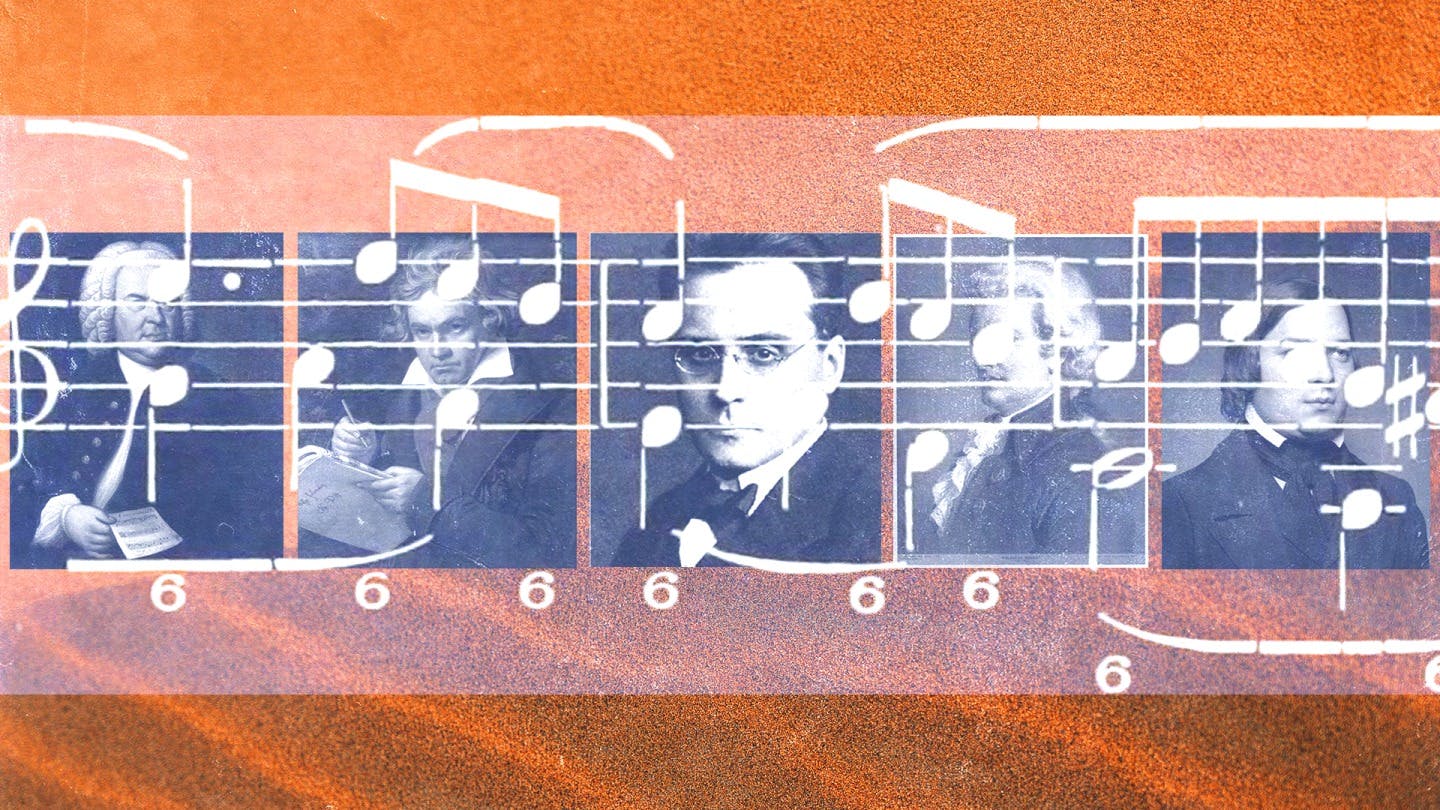Counterpoint in Music: How Melodies Work Together
Counterpoint is a term that spans from the earliest Western music all the way to today.
It’s the bedrock on top of which our system of musical harmony developed.
And while it may seem like a dusty, academic practice, the basic principles of counterpoint can help you write better music in 2023.
In this article I’ll explain what counterpoint is, break down the essential concepts and suggest ways to apply it in contemporary music.
Let’s get started.
What is counterpoint in music?
Counterpoint in music is the practice of arranging multiple melodic lines to sound pleasing when played at the same time.
It focuses on the motion and interaction of melodies rather than individual chords and harmony.
Counterpoint is taught in traditional music education to give students a foundation in historical methods of composition.
But the core ideas are applicable for any style of music or production. Counterpoint teaches you to pay attention to the harmonic effects of the melody lines in your arrangements.
Counterpoint basics
Writing good counterpoint is a deep subject you could spend years studying. But the basics are surprisingly simple.
The first essential concept is the different types of motion that occur when melodic lines are combined.
These are:
- Parallel motion: when two lines move in the same direction
- Oblique motion: one line stays the same while the other moves
- Contrary motion: the two lines move in opposite directions
The goal in counterpoint is for the voices to function independently, so contrary and oblique motion are preferred where possible—more on this later!
On top of that, counterpoint can have more than two lines, so managing the interaction of multiple voices and ensuring smooth motion between each is a major focus.
Music theory essentials
Get started with our intro guides.
Rules of counterpoint
The traditional study of counterpoint relies heavily on a system of compositional rules.
Of course, in modern music writing, there’s no reason to follow these conventions so strictly.
But they’re helpful to know to understand how contrapuntal writing works.
After all, the system was developed to help composers reach specific harmonic outcomes.
Here are the most commonly taught rules for writing counterpoint:
1. Avoid parallel perfect intervals
All musical intervals have a number and a qualifier to identify them.
Perfect fourths and perfect fifths have a stable sound with no major or minor quality. Composers at the time felt these intervals could diminish the feeling of independent voices if not treated carefully.
As such, avoiding parallel motion of perfect intervals is one of the core tenets of counterpoint.
Parallel fifths were considered especially important to avoid!
2. Avoid skips to dissonance
The concepts of consonance and dissonance were much more rigid in the era of early music.
That meant composers were sensitive to issues we’re not too concerned about today. One of these was how different notes in the scale are approached.
Large skips to a dissonant note were considered off the table for smooth counterpoint writing.
3. Avoid tritones
The tritone is an interval with an infamous reputation. While it’s often repeated that it represented the “devil in music,” it was never actually banned by religious authorities as some sources claim.
However, it’s an important rule of counterpoint to avoid lines that would result in the augmented fourth/diminished fifth sonority.
On top of that, melodic skips of a tritone in either direction are forbidden—see rule #2!
4. Fill in skips
Stepwise motion is considered the smoothest option for melodic lines in traditional counterpoint.
One common rule is to fill in skips with steps in the opposite direction, especially for skips of larger intervals.
Following this rule produces gentle melodic contours that help you harmonize the other lines.
How to use counterpoint in your songwriting
With the basics out of the way, counterpoint comes into play any time you’re dealing with independent melodic lines that occur at the same time.
This includes multiple melodic lead lines, harmony vocals, or even interactions between instruments such as the melody and the bassline.
In this sense, counterpoint is an arrangement tool that helps you craft tidier, more musical ideas.
Here are some basic arrangement tips that come from the rules of counterpoint:
1. Avoid too much parallel motion
As I mentioned above, traditional counterpoint has some strict rules around parallel motion.
And while you have free reign to use whatever intervals you choose in your own productions, consider breaking up blocky parallel motion with contrary or oblique lines.
Just holding a note in one voice to create oblique motion can add fluidity to a part that might otherwise feel too chunky.
2. Use suspensions where you can
Sus chords are an inspiring harmonic tool, but counterpoint-style suspensions can be just as fun.
This technique involves resolving a held tone up or down to a stable resting place.
You’re probably familiar with the common 4-3 suspension, but there are others to explore such as 9-8, 7-6 and 2-3
Suspensions are a big part of why contrapuntal music sounds distinct. They can be an addictive sound once you know how they work, so give them a try!
3. Keep inner voices interesting
Many of the most studied counterpoint compositions were intended to be sung by a choir.
As a result, each voice needed to retain enough melodic substance for the singer to carry the tune.
It’s the reason why inner voices in contrapuntal music are lively and active with melodies of their own.
You can apply this same concept to keep your harmonic content interesting, even during repeated sections.
Point and counterpoint
The study of counterpoint has been around since the earliest music theorists.
With a tradition that’s lasted this long, it’s worth seeing what you can learn from it for your own practice.
If you’ve made it through this article, you’ll have a good overview of the basics of counterpoint.
Gear guides, tips, tutorials, inspiration and more—delivered weekly.
Keep up with the LANDR Blog.
